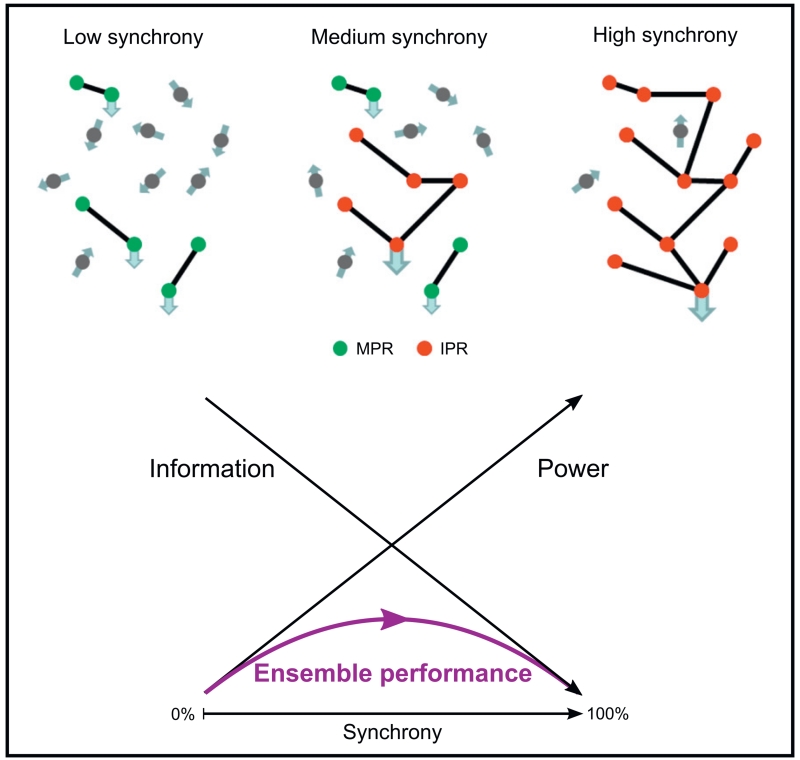Fig. 5.
Idealised relationship between ensemble performance and neural synchrony. As sub-populations of neurons become correlated, the signal-to-noise ratio of that cluster relative to the population increases. At the same time the amount of information that can be transmitted by the ensemble decreases. The result is an inverted U-shape to ensemble performance as synchronisation increases. Mutability promoting rhythms (MPR), such as those in the gamma band, operate to the left of the ensemble performance curve, as dictated by their low power, weakly and locally synchronised nature. Increases in synchronisation in these activities improve ensemble performance and the ability to react to changing circumstances. Immutability promoting rhythms (IPR) such as alpha and beta, tend to operate to the right of the ensemble performance curve in keeping with their higher power, more extensively synchronised nature. This degree of synchronisation is more likely to be supported by recurrent networks where reinforcement of the ongoing oscillations leads to a further reduction in reactivity to external perturbation. Increases in synchronisation in more synchronised immutability promoting rhythms diminish ensemble performance and the ability to react to changing circumstances. This may, in turn, be exaggerated by plastic reconfiguration of networks by the rhythmic activities themselves (see text).

